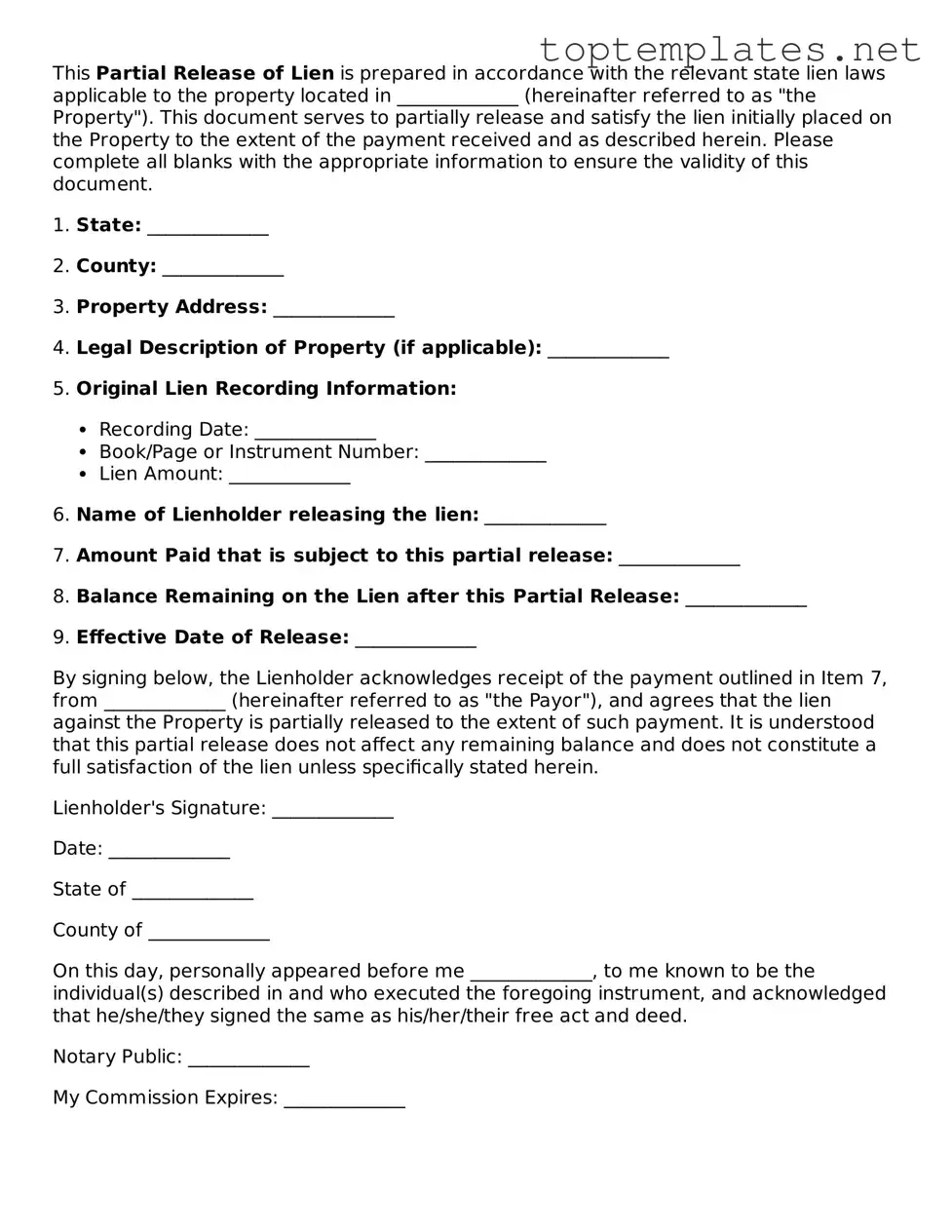This Partial Release of Lien is prepared in accordance with the relevant state lien laws applicable to the property located in _____________ (hereinafter referred to as "the Property"). This document serves to partially release and satisfy the lien initially placed on the Property to the extent of the payment received and as described herein. Please complete all blanks with the appropriate information to ensure the validity of this document.
1. State: _____________
2. County: _____________
3. Property Address: _____________
4. Legal Description of Property (if applicable): _____________
5. Original Lien Recording Information:
- Recording Date: _____________
- Book/Page or Instrument Number: _____________
- Lien Amount: _____________
6. Name of Lienholder releasing the lien: _____________
7. Amount Paid that is subject to this partial release: _____________
8. Balance Remaining on the Lien after this Partial Release: _____________
9. Effective Date of Release: _____________
By signing below, the Lienholder acknowledges receipt of the payment outlined in Item 7, from _____________ (hereinafter referred to as "the Payor"), and agrees that the lien against the Property is partially released to the extent of such payment. It is understood that this partial release does not affect any remaining balance and does not constitute a full satisfaction of the lien unless specifically stated herein.
Lienholder's Signature: _____________
Date: _____________
State of _____________
County of _____________
On this day, personally appeared before me _____________, to me known to be the individual(s) described in and who executed the foregoing instrument, and acknowledged that he/she/they signed the same as his/her/their free act and deed.
Notary Public: _____________
My Commission Expires: _____________
